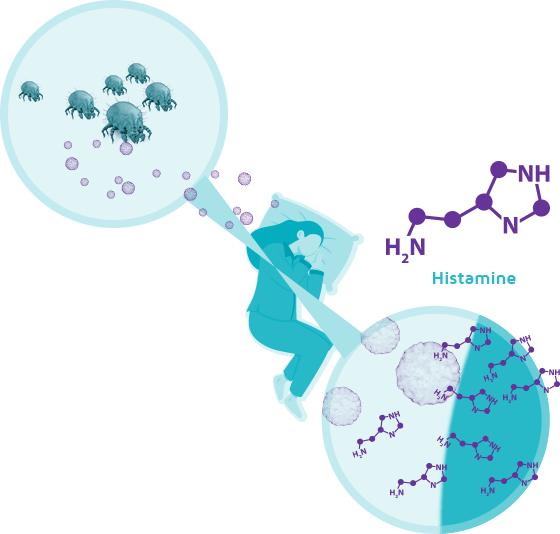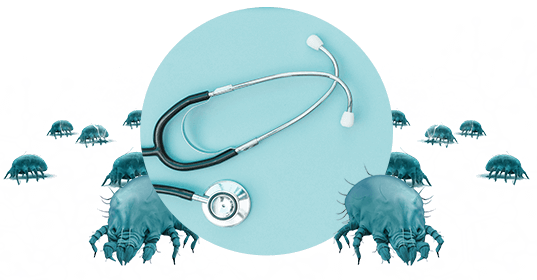
Do I have a cold, or is it an allergy?

A runny nose, known as rhinorrhoea in the medical world, is the result of rhinitis – an inflammation of the nasal passages. Rhinitis can be caused by a variety of conditions, from changes in temperature and humidity (vasomotor rhinitis), exposure to particles or chemicals in the air, allergies, viruses and reactions to medicines or hormonal changes. But how can you tell the difference between viral rhinitis and allergic rhinitis?
Cold vs. allergy: the differences
In both allergic and viral rhinitis, the skin lining the inside of the nose (known as the nasal mucosa) swells and secretes mucus. However, the presence of other symptoms provides clues to whether your sneezing (or the symptoms of your baby, child or family member) is the result of a pathogen or an allergen.
Common colds, caused by viruses, start out with sneezing and progress to a stuffy nose with often greenish mucus. You may also have a sore throat, cough, sinusitis or conjunctivitis, an inflammatory condition of the eye that leads to the production of yellow or greenish secretions.
Allergic rhinitis is a type of chronic rhinitis that involves mainly sneezing fits, clear and watery nasal mucus, watery and itchy nose and eyes. Irritated airways can lead to dry allergic coughs. Fever is not associated with allergic rhinitis, but symptoms can be debilitating.

The basics of allergic rhinitis
Allergic rhinitis is the body’s exaggerated response to allergen exposure, leading to the release of histamine. Histamines trigger nasal swelling, leading to the dilation of blood vessels and the overproduction of mucus – hence, the distracting allergy symptoms that you may be familiar with.
If allergic rhinitis occurs during the seasonal flowering of allergenic plants, it’s considered seasonal rhinitis, also known as hay fever. Persistent rhinitis results when a person is constantly exposed to allergens in their environment. Symptoms can peak when sufferers wake in the morning and may be repeated throughout the day.
Dust mite allergens tend to cause persistent rhinitis in sensitive people, leading to lost productivity, lower school performance, distractibility and poor sleep quality. Allergy attacks can even cause debilitating asthma in some cases. Asthma is a separate symptom from allergic rhinitis, leading to wheezing and breathing difficulties.
Still curious about the symptoms of dust mite allergy? Get the details.


Benjamin Tillier
Benjamin Tillier has more than 18 years of international experience in various sectors. He has been active in the healthcare industry since 2011. In regular contact with dust mites allergic people as well as professors and allergy specialists, he acquired an in-depth knowledge in this field.
Related articles



